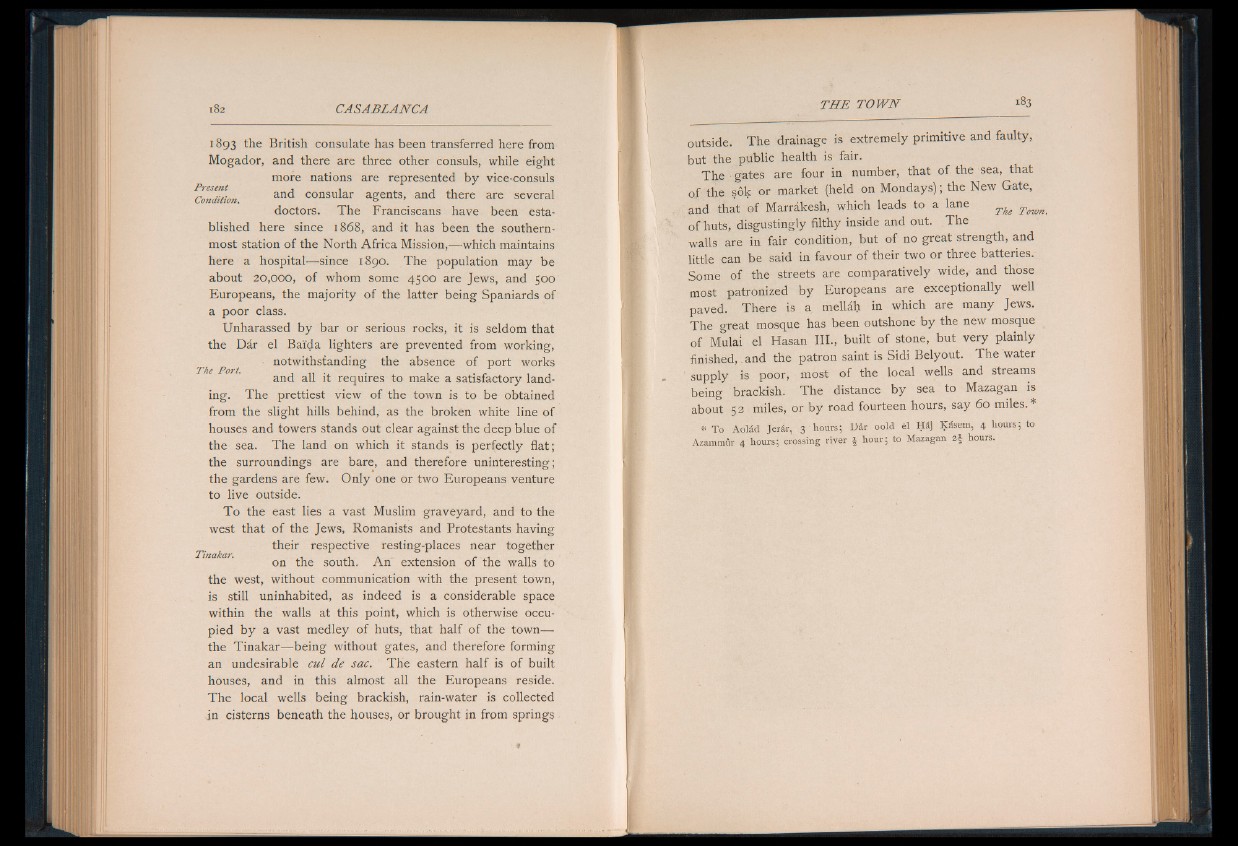
1893 the British consulate has been transferred here from
Mogador, and there are three other consuls, while eight
Present
Condition.
The Port.
more nations are represented by vice-consuls
and consular agents, and there are several
doctors. The Franciscans have been established
here since 1868, and it has been the southernmost
station of the North Africa Mission,— which maintains
here a hospital— since 1890. The population may be
about 20,000, of whom some 4500 are Jews, and 500
Europeans, the majority o f the latter being Spaniards of
a poor class.
Unharassed by bar or serious rocks, it is seldom that
the Dar el Baida lighters are prevented from working,
notwithstanding the absence of port works
and all it requires to make a satisfactory landing.
The prettiest view o f the town is to be obtained
from the slight hills behind, as the broken white line of
houses and towers stands out clear against the deep blue of
the sea. The land on which it stands is perfectly flat;
the surroundings are bare, and therefore uninteresting;
the gardens are few. Only one or two Europeans venture
to live outside.
To the east lies a vast Muslim graveyard, and to the
west that of the Jews, Romanists and Protestants having
their respective resting-places near together
on the south. A n extension of the walls to
Tinakar.
the west, without communication with the present town,
is still uninhabited, as indeed is a considerable space
within the walls at this point, which is otherwise occupied
by a vast medley of huts, that half o f the town—
the Tinakar— being without gates, and therefore forming
an undesirable cul de sac. The eastern half is of built
houses, and in this almost all the Europeans reside.
The local wells being brackish, rain-water is collected
in cisterns beneath the houses, or brought in from springs
outside. The drainage is extremely primitive and faulty,
but the public health is fair.
The gates are four in number, that of the sea, that
of the sok or market (held on Mondays); the New Gate,
and that of Marrakesh, which leads to a lane ^
of huts, disgustingly filthy inside and out. The
walls are in fair condition, but of no great strength, and
little can be said in favour of their two or three batteries.
Some of the streets are comparatively wide, and those
most patronized by Europeans are exceptionally well
paved. There is a mellah in which are many Jews.
The great mosque has been outshone by the new mosque
of Mulai el Hasan III., built of stone, but very plainly
finished, .and the patron saint is Sidi Belyout. The water
supply is poor, most of the local wells and streams
being brackish. The distance by sea to Mazagan is
about 5 2 miles, or by road fourteen hours, say 60 miles. *
* To Aolad Jerir, 3 hours; D ir oold el Haj Kasem, 4 hours; to
Azammur 4 hours; crossing river ■§ hour; to Mazagan 2| hours.